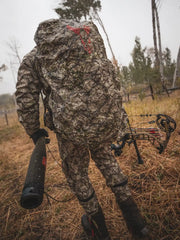For most of us, spring is in sight. Snow is becoming less and less of a concern. Animals are starting to feel it, too. Heck, you may even have grass starting to think about turning green.
That’s all well and good, but let’s not get too tied up dreaming about singing and dancing with the animals a la Snow White. We have work to do!
Your game cameras have been outside, cold and in the elements ever since deer season. Sure, that’s what they’re made for, but you should still show them some love this time of year.
 We gave our pal Trent Marsh at Spypoint a shout to get his expert guidance on what needs to be done this time of year to keep our cameras (quietly) clicking away the rest of the year.
We gave our pal Trent Marsh at Spypoint a shout to get his expert guidance on what needs to be done this time of year to keep our cameras (quietly) clicking away the rest of the year.
For starters, go get your trail cameras. Now’s the time to see which units survived, which may be mortally wounded, and which ones are good to go another round. If you have a shed-hunting hike planned, this is a good time to double-down and check those cameras.
Some things Marsh recommends checking out:
- Lenses – Make sure the camera lens isn’t scratched up, fogged or otherwise damaged. Condensation or moisture inside the lens or flash is a bad sign, and means your game camera may be toast.
- Firmware – Even non-cellular trail cameras may have firmware updates. Check your manufacturer’s website for updates and instructions.
- Seals – Make sure the rubber gasket that seals the game camera is intact and pliable. If it’s cracked, separated or getting really hard, you may want to consider replacing this one, as it’s just a matter of time before water damage occurs.
- Memory Cards – Clear off all the old images and reformat your cards. This keeps memory at a maximum and reduces the chance of file errors down the road.
- Mounting Points – Wind blows. Cold freezes. Trees grow. All these can strain your attachment points and straps. Give these a good once-over to make sure they’ll keep the game camera secure for another year.
- Battery Compartment – Inspect this to make sure there’s no battery leakage. If you spot any corrosion, clean as much out as you can. That popular soda that pairs nicely with rum works pretty well—just be sure to give everything a good rinse to get all the sugar out. A little dielectric grease should keep things cleaned up.
Now that the physical is taken care of, let’s think strategically.
- Are there signs of deer, turkey, werewolves, etc., but no pics? Yeah, that’s a problem. Take the trail camera home for a thorough test.
- Was this a productive location? If there’s no critter movement, there’s no real need to put the game camera there again.
- Consider a new location. Look for tracks in the snow or mud to help identify new game corridors.
- If equipped with a solar panel, did it get enough sun in this location? If you were constantly replacing batteries, the solar panel was probably in the shade too much.
- Were you getting good pics? Nothing crushes dreams harder than seeing the rump of a deer, but not being able to see the head/antlers because the setting sun created massive glare.
Now is also a good time to upgrade. Marsh points out that all the new game cameras are hitting the market and shops are having sales. If you’ve been fighting older cameras or just having problems in general, it’s time to step up your camera game.
The latest trail cameras have crazy-good resolution, more refined detection systems and longer battery life, so maybe it’s time for an upgrade. Or, maybe you’re tired of driving out and hiking all over creation to check your cameras. If so, it’s time to upgrade to a cellular camera (or upgrade your own, check out Spypoint’s cool new tech we saw at the ATA show).
Once you’ve got your old game cameras cleaned up (or have your new ones in hand), you can plan your placement strategy for 2020, get them hung and start cataloging where the deer are and which buck may be your trophy come fall.
















